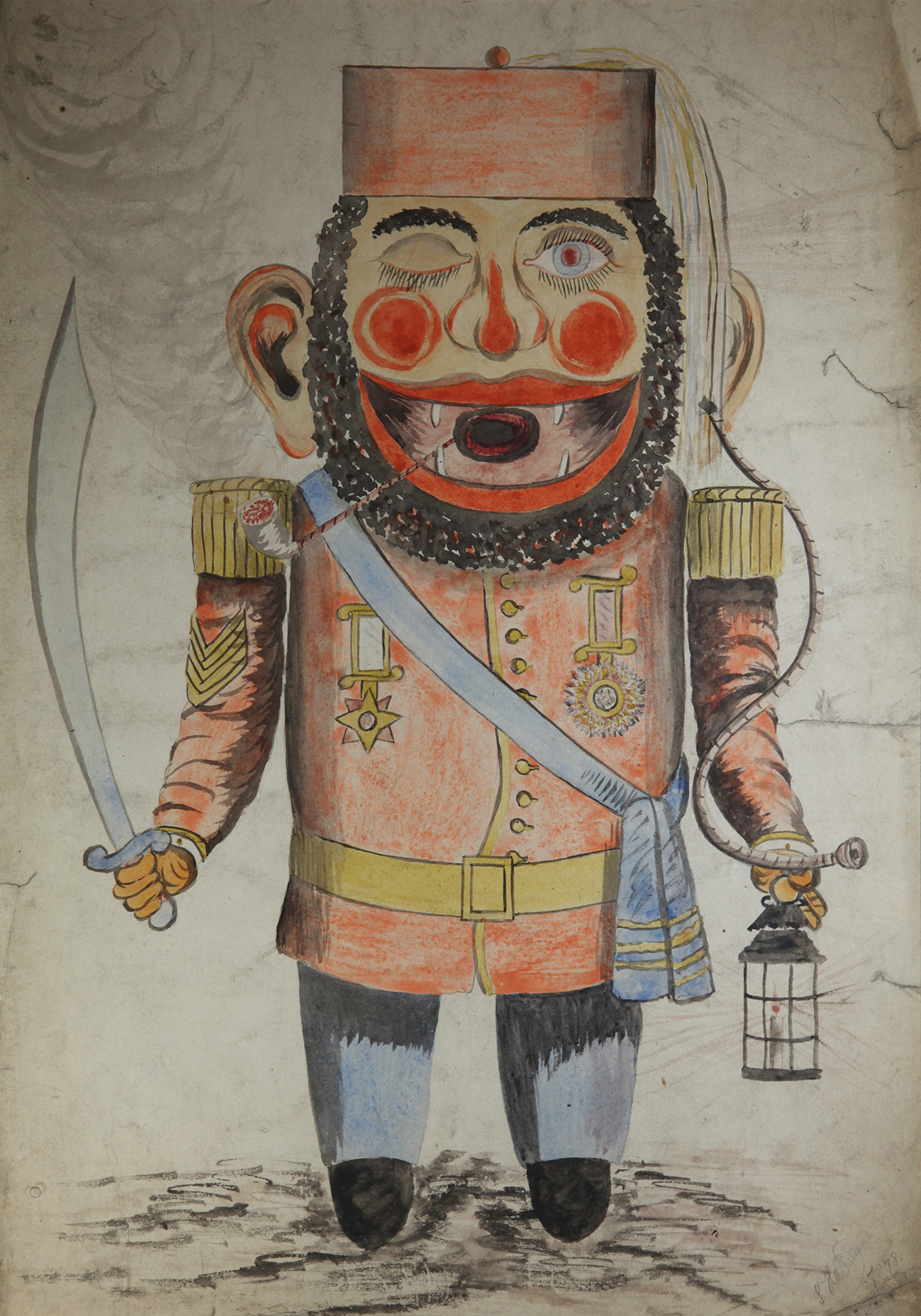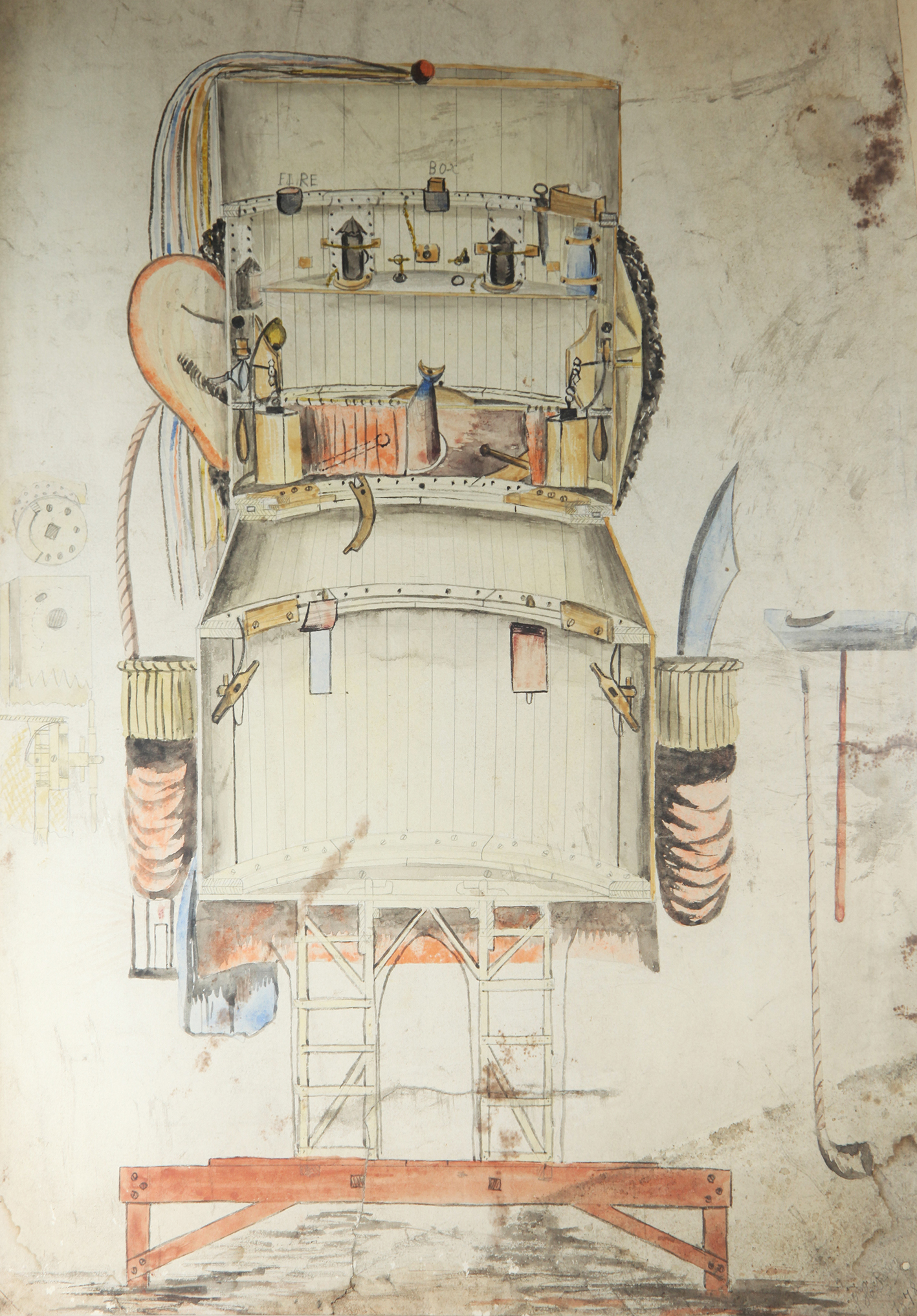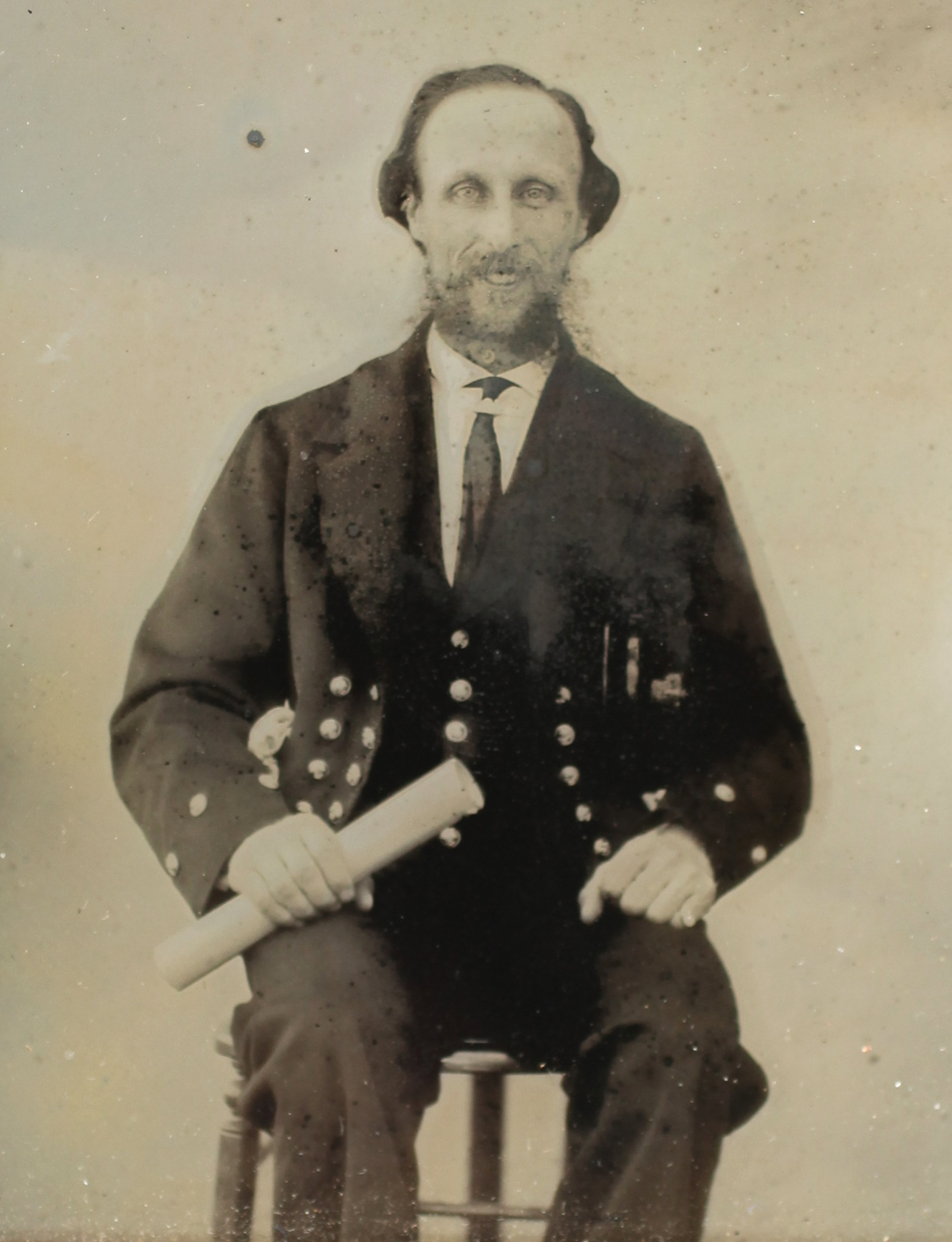 Abraham Lincoln
If given the truth, the people can be depended upon to meet any national crisis...
Abraham Lincoln
If given the truth, the people can be depended upon to meet any national crisis...
 Guildford news...
for Guildford people, brought to you by Guildford reporters - Guildford's own news service
Guildford news...
for Guildford people, brought to you by Guildford reporters - Guildford's own news service
James Henry Pullen: Inmate – Inventor – Genius, Exhibition At Watts Gallery
Published on: 22 Jun, 2018
Updated on: 22 Jun, 2018
Sponsored article
Watts Gallery Artists’ Village’s latest exhibition in the stunning location at Compton is about the wonderful ‘idiot savant’ James Henry Pullen: Inmate – Inventor – Genius.
Born in London in 1835, Pullen was first confined at the age of 12, he would spend the rest of his life at the Royal Earlswood Asylum. He died in 1916.
He was classified, and studied by doctors, as an ‘idiot savant’, apparently a result of his inability to communicate with those around him.
The exhibition that runs until October 28 explores the life and imagination of the man. It examines the creative escapism of an outsider artist who attracted royal attention and critical acclaim during his own lifetime.
Dubbed by Victorian journalists as ‘the genius of Earlswood Asylum’, Pullen saw his fantastical works escape the confines of the asylum, to travel to international exhibitions.
Pullen became occupied in creating extraordinary designs, gigantic articulated puppets, detailed drawings, fantastical kites and models of boats from a specially converted studio-room – escaping his cell through his art.
Some of the most fascinating are elaborate model ships, including the State Barge (1886-7), an intricate vessel in wood and ivory that Pullen apparently intended for a kind of travelling office for Queen Victoria.
The Rotary Barge (circa 1860 -1898) is an elaborate Heath Robinson-like construction which, having been in pieces for decades, has been newly restored and researched.
Pullen also created a colossal Giant, a towering fully automated figure that was part puppet, part guardian, and in many ways an extension of himself. Working on its evolution over several decades, Pullen was able to move the giant’s ears, tongue, eyes and eyelids.

James Henry Pullen, Drawing of ‘The Giant’ (outside view), late 1860s or early 1870s, pencil on paper, Langdon Down Museum of Learnin.
Pullen’s story will also be brought to life through his own Pictorial Autobiography, an intricate ‘comic strip’-style account of the artist’s life, telling his story from his own perspective, and through a specially commissioned new film about him, directed by Gilly Booth of HiJack Films.
Pullen and his artistic output defied categorisation and provide a timely reminder that creative genius can be found in unexpected places, just as it did when his art and his story captivated 19th-century audiences.

James Henry Pullen, Drawing of ‘The Giant’ (inside view), late 1860s or early 1870s, pencil on paper, Langdon Down Museum of Learning.
Kirsten Tambling, exhibition co-curator, said: “James Henry Pullen’s character shines through his doctors’ case notes, and he emerges as both an immensely skilled carver and model-maker and a fascinating character who had to spend his life negotiating the 19th-century asylum system.’
“This poses a difficult question to contemporary audiences: where do we draw the line between the ‘sane genius’ accepted by society and the ‘outsider’ who does not conform to its strict rules?”
The exhibition is part of a season about learning through making and social change, inspired by Watts Gallery’s founders, G F and Mary Watts.
The programme includes additional exhibitions and special events which can be found at www.wattsgallery.org.uk/whats-on/james-henry-pullen.
Twitter: @WattsGallery Facebook/wattsgalleryartistsvillage
Recent Articles
- I Will Not Be Voting in the County Council Election Today
- Home-to-School Transport Refused
- Devolution: Ministry Asks for Clarification of How £5 billion Debt Will Be Managed
- Website Maintenance
- Letter: The Younger Generations Might Learn from Our Experience
- Final Steam Train Signalled by Farncombe, Petersfield and Haslemere Signal Boxes
- New Toucan Crossing on Woking Road to Facilitate Weyside Urban Village Project
- Updated: Honesty Questioned as Waverley Scraps Ground Maintenance Deal
- Letter: Please Send Nominations for Design Awards
- Notice: Do You Need Nature on Prescription?


Search in Site
Media Gallery
Dragon Interview: Local Artist Leaves Her Mark At One of England’s Most Historic Buildings
January 21, 2023 / No Comment / Read MoreDragon Interview: Lib Dem Planning Chair: ‘Current Policy Doesn’t Work for Local People’
January 19, 2023 / No Comment / Read MoreA3 Tunnel in Guildford ‘Necessary’ for New Homes, Says Guildford’s MP
January 10, 2023 / No Comment / Read More‘Madness’ for London Road Scheme to Go Ahead Against ‘Huge Opposition’, Says SCC Leader
January 6, 2023 / No Comment / Read MoreCouncillor’s Son Starts Campaign for More Consultation on North Street Plan
December 30, 2022 / No Comment / Read MoreCounty Council Climbs Down Over London Road Works – Further ‘Engagement’ Period Announced
December 14, 2022 / No Comment / Read MoreDragon Interview: GBC Reaction to the Government’s Expected Decision to Relax Housing Targets
December 7, 2022 / No Comment / Read MoreHow Can Our Town Centre Businesses Recover? Watch the Shop Front Debate
May 18, 2020 / No Comment / Read More














Recent Comments